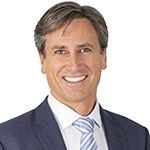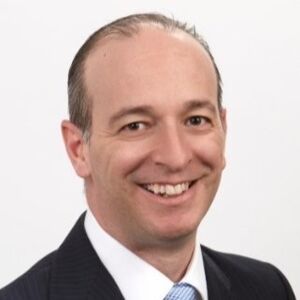Q&A with Sean Fenton on the launch of Sage Capital

After having worked for some of the biggest names in investment management, Sean Fenton has set up his own funds management company - Sage Capital. He explains to Industry Moves why he finds the lure of extra returns from the short side compelling (both Sage Capital's first two funds are long/short funds). He also tells us how his father's decision to set up a self managed superannuation fund before it was 'trendy' might be behind Sean's lifelong interest in investing.

After having worked for some of the biggest names in investment management, Sean Fenton has set up his own funds management company - Sage Capital. He explains to Industry Moves why he finds the lure of extra returns from the short side compelling (both Sage Capital's first two funds are long/short funds). He also tells us how his father's decision to set up a self managed superannuation fund before it was 'trendy' might be behind Sean's lifelong interest in investing.
Both of your newly-launched funds utilise long/short strategies; will all of your future funds utilise the same strategy?
A long/short structure is a very efficient way of managing active money. It allows a fund to leverage the benefits of diversification and be style neutral while still targeting high returns. It is particularly useful in a small market like Australia which has a very concentrated benchmark index.
There is more of a case for running long only portfolios across global equities or in lower tracking error funds, but we still find the lure of extra returns from the short side compelling.
What advantages does the long/short process offer investors?
The long/short structure can help deliver higher returns in a more risk-controlled fashion. Where a manager has a broad investment process, such as at Sage Capital, it allows a better alignment between the portfolio positions and the expected return for the stock. More of the investment process can be captured while maintaining a high level of diversification. The only means of delivering higher returns for a long only manager is to concentrate positions, which can lead to style bias and more volatile returns over time. Of course, the investment outcome from a long/short structure also becomes more leveraged to the manager's skill.
Do you think there was a gap for this type of product in the Australian market?
There is a yawning gap for more long/short solutions like the CC Sage Capital Equity Plus Fund in the market. Investors are struggling with allocating to value and growth managers to neutralise style bias, only to discover that they're paying active fees for index performance. Style neutral long/short funds don't require diversification with a negatively correlated fund. A portfolio of long/short funds from quality managers is more likely to deliver genuine active returns.
There is also an increasing need for genuinely diversified returns. Easing monetary policy globally has pushed all asset prices from bonds and credit to equities and property to record levels. The downside of this is that their correlations have been pushed towards one and they offer little in terms of diversification during periods of volatility. There is increasing interest in alternatives and the CC Sage Capital Absolute Return Fund fills this space by offering exposure to unique returns that are uncorrelated with other asset classes.
You site ESG and responsible investing practices as important on your website, do companies that have poor ESG records provide good shorting opportunities?
Poor performance on ESG can have very material consequences for profits and performance. Misaligned incentive structures and poor governance can lead to short sighted and poor decision making by management, while flouting environmental regulations and social expectations and conventions can lead to a punishing backlash from regulators and customers. Failure to meet adequate ESG standards increases the attractiveness of a company as a short candidate, while cleaning up its act can improve a company's chance of being a buy.
Where do your funds fit into an investor's portfolio?
The two funds have distinct roles in a portfolio.
The CC Sage Capital Equity Plus Fund fits in as an Australian equity exposure. The 150/50 long/short structure allows the fund to target higher returns by exploiting underperforming stocks as well as outperformers while still retaining full exposure to the equity market.
The CC Sage Capital Absolute Return Fund is a market neutral fund that strips out exposure to the underlying equity market. The 200/200 long/short structure enables the investor to gain a greater exposure to the Sage Capital investment process without taking on equity market risk. This fits neatly into the 'alternatives' category for investors seeking a unique source of uncorrelated returns.
Can you tell us a little bit about why you decided to set Sage Capital up?
Setting up Sage Capital was about bringing together a team of highly skilled investors with a set of shared beliefs and strong alignment. The investment team members are all significant equity holders and are focused on the one investment process. This investment process blends together some unique quantitative and fundamental skill sets and has delivered strong returns over many years.
It was also an opportunity to bring a new product to market. As well as the CC Sage Capital Equity Plus Fund which aims to deliver returns above the Australian equity market, the Absolute Return fund aims to deliver returns above the cash rate for those investors who want to avoid equity market exposure.
What has been the reaction to the launch so far?
The early reaction to the launch has been pleasingly positive. The clean structure of the business where our interests are clearly aligned with those of our investors has resonated well. The two different fund offerings fulfil some clear unmet needs in the market as well and have generated some material interest.
...and a little about you Sean
What was the impetus for your career in finance?
I had an interest in the stock market from a reasonably young age which most likely came from my father who ran a self-managed superannuation fund back before it was either trendy or compulsory. At school I had an affinity for mathematics and economics and a strong desire to understand how things worked, both from a mechanical and a behavioural perspective. This led me into majoring in Finance at university where I studied Commerce/Law.
What was your very first job?
My first paying job was as a waiter out at the Sydney Cricket Ground and Sydney Football Stadium while I was at university at UNSW. It was great fun and left me with enough spare cash for pizza and beer, which anyone who saw the stack of pizza boxes in my apartment can attest to.
My first job in my finance career was in the equity research department at Credit Suisse working as a research assistant as the country emerged from the early 90's recession. I was given a lot of opportunity, had some great mentors and made some lifelong friends so it was a great place to start my career.
Where did you grow up and what was it like?
I grew up at Bronte beach in Sydney. The ratio of tradies to investment bankers has changed a bit since then, but growing up there was the quintessential Australian childhood. It was a great place to grow up and I still retain a strong affinity for the outdoors and the ocean and love getting out in the surf.



